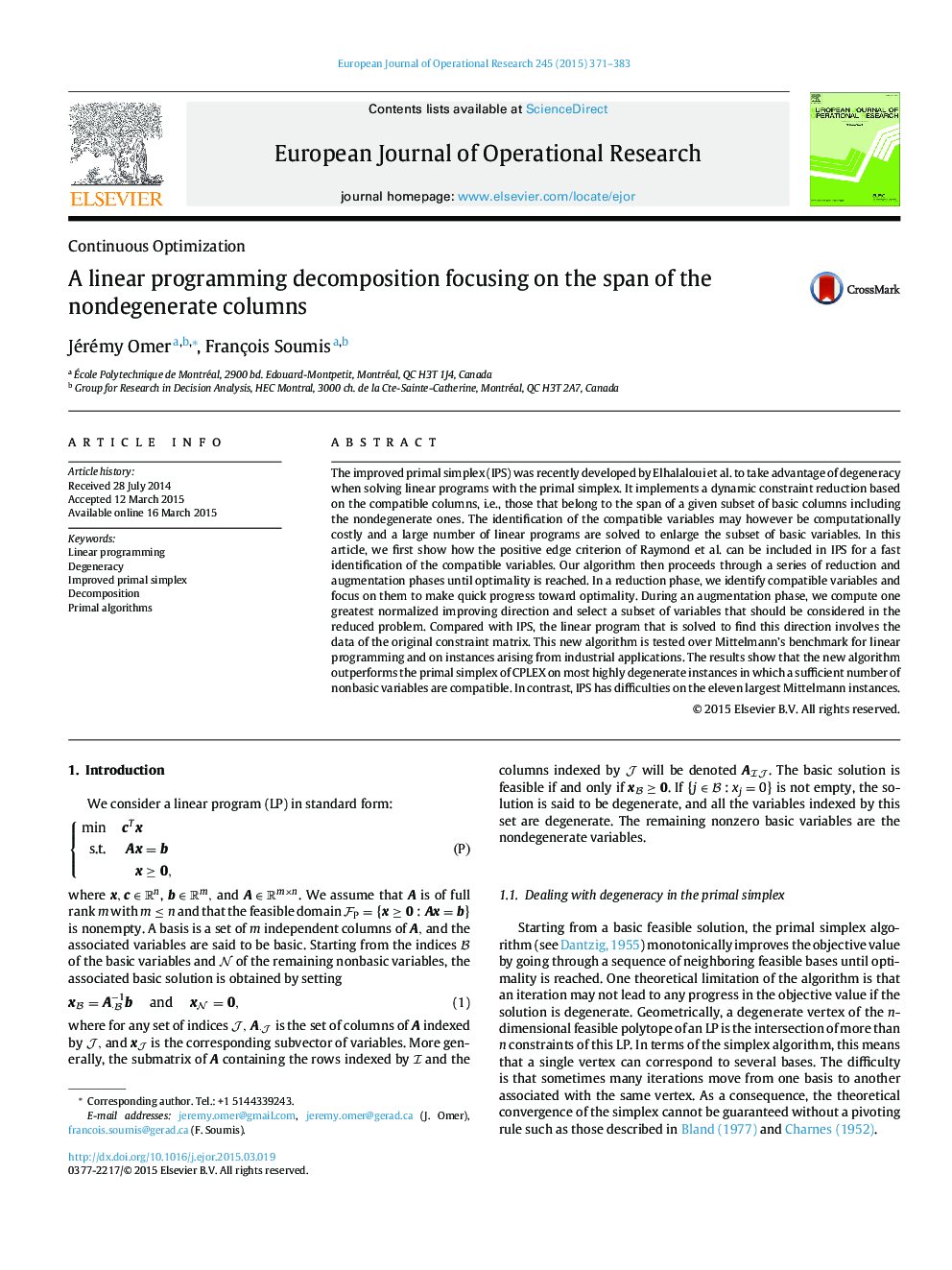| Article ID | Journal | Published Year | Pages | File Type |
|---|---|---|---|---|
| 479513 | European Journal of Operational Research | 2015 | 13 Pages |
•We identify the limits of the existing improved primal simplex (IPS).•We revise every step of the dynamic reduction implemented in IPS.•We show how basic solutions can be built to warm start the solution of each problem.•A simple and fast procedure can test the potential for improvement of the algorithm.•The algorithm outperforms IPS and CPLEX’s primal simplex on a large benchmark.
The improved primal simplex (IPS) was recently developed by Elhalaloui et al. to take advantage of degeneracy when solving linear programs with the primal simplex. It implements a dynamic constraint reduction based on the compatible columns, i.e., those that belong to the span of a given subset of basic columns including the nondegenerate ones. The identification of the compatible variables may however be computationally costly and a large number of linear programs are solved to enlarge the subset of basic variables. In this article, we first show how the positive edge criterion of Raymond et al. can be included in IPS for a fast identification of the compatible variables. Our algorithm then proceeds through a series of reduction and augmentation phases until optimality is reached. In a reduction phase, we identify compatible variables and focus on them to make quick progress toward optimality. During an augmentation phase, we compute one greatest normalized improving direction and select a subset of variables that should be considered in the reduced problem. Compared with IPS, the linear program that is solved to find this direction involves the data of the original constraint matrix. This new algorithm is tested over Mittelmann’s benchmark for linear programming and on instances arising from industrial applications. The results show that the new algorithm outperforms the primal simplex of CPLEX on most highly degenerate instances in which a sufficient number of nonbasic variables are compatible. In contrast, IPS has difficulties on the eleven largest Mittelmann instances.
